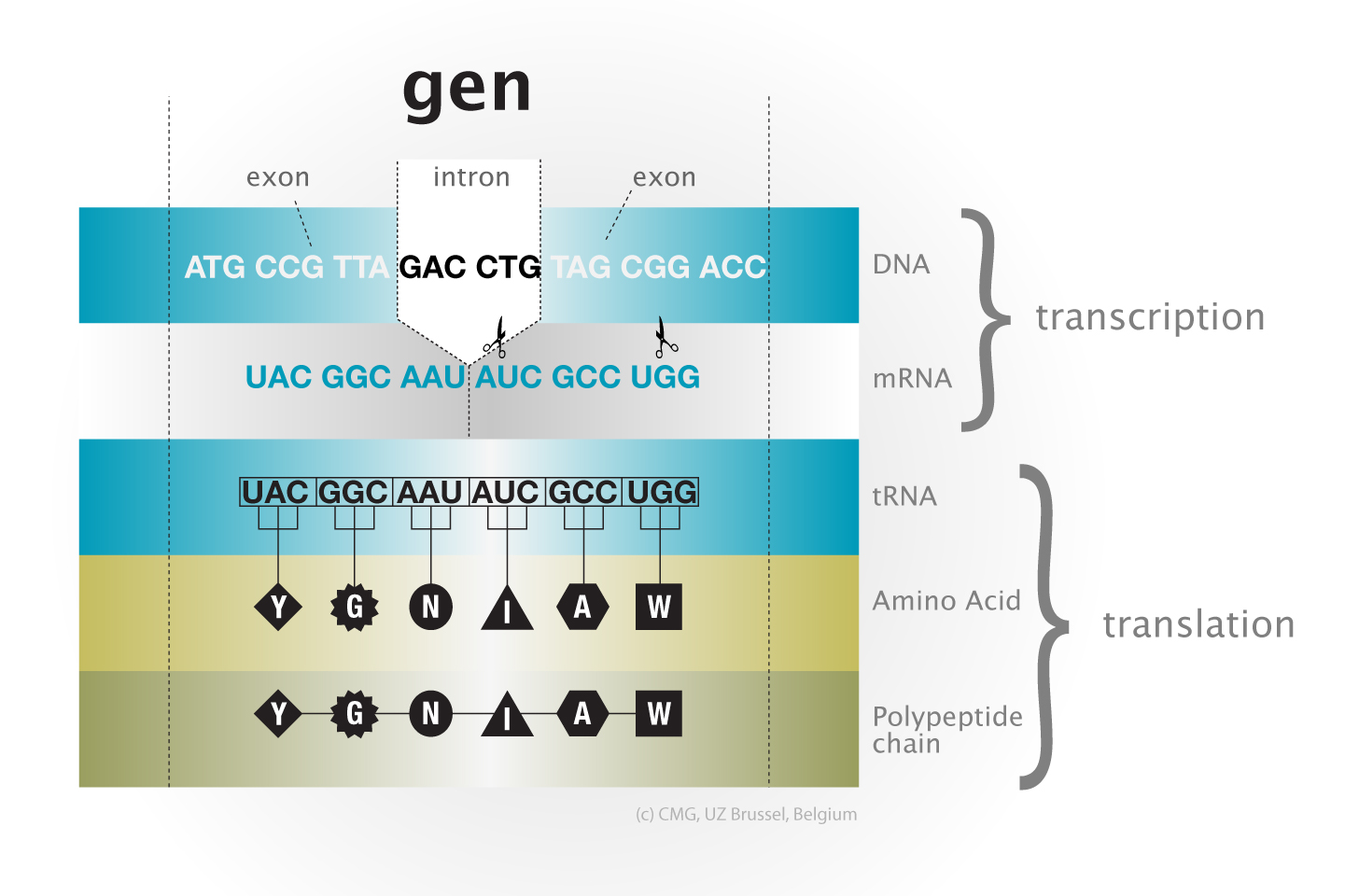Gene expression
During gene expression the introns or nonsense DNA have to be removed. This can only be done if the DNA in a gene is first 'transcribed' into complementary RNA (ribonucleic acid). We call this 'transcription'.
Further processing of the RNA takes place in a process called 'splicing': the introns are cut off so that the various exons in a gene can be assembled and joined together.
After this, 'translation' takes place in specialised little factories in the cytoplasm called ribosomes: the RNA is translated into the correct chain of amino acids. After the necessary adaptations, the chain that is thus formed will ultimately create the functional protein.
It is also important to know that (although all our cells contain the same DNA) not all our cells express the same genes. A skin cell behaves differently to a brain cell or an organ cell, so it is controlled by different commands. Different genes may therefore be expressed in each cell type - sometimes in different quantities - or different proteins may interact with each other.
